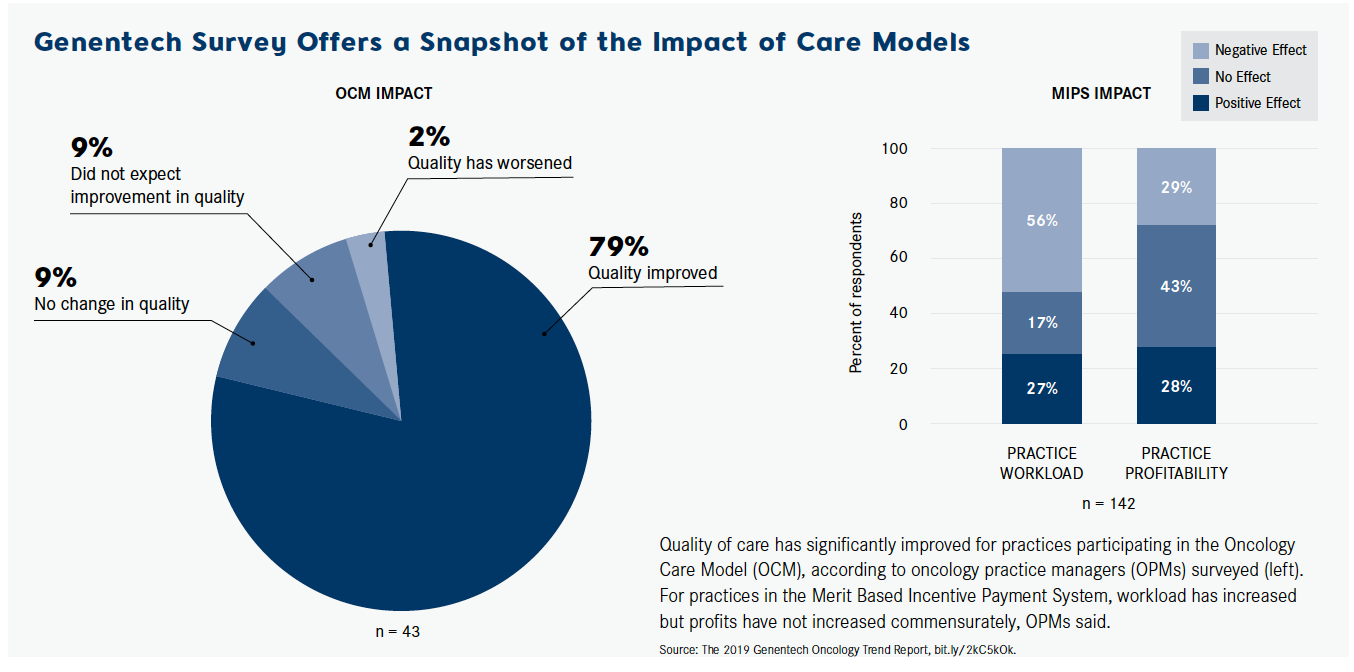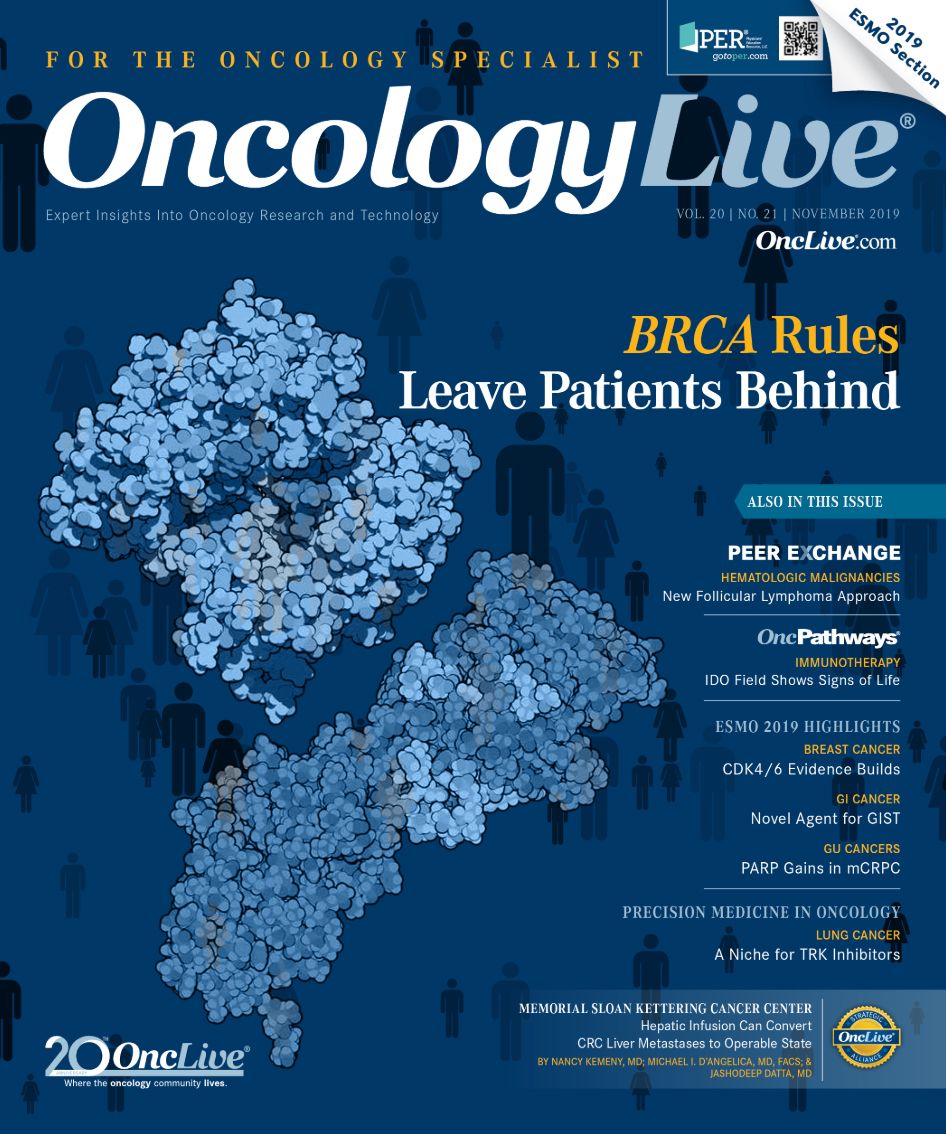Publication
Article
Can New Oncology Payment Programs Help Stabilize Medicare?
Author(s):
Studies have raised doubts about the value Medicare and other payers are getting for the care they pay for, including in oncology. This has intensified the demand for new value-based care models such as the Merit-based Incentive Payment System and the Oncology Care Model.
Marcus Neubauer, MD
Due to the high cost of cancer care, the oncology landscape is under intense scrutiny from the Centers for Medicare & Medicaid Services (CMS) and commercial payers. Cost trends in oncology demonstrate that what Medicare pays for cancer care is unsustainable and changes must occur or the program will soon be insolvent. Medicare’s hospital insurance trust fund is projected to be depleted by 2026.1 If this happens, more financial burden will shift to patients or care for Medicare beneficiaries may not be available.
Studies have raised doubts about the value Medicare and other payers are getting for the care they pay for, including in oncology.2-4 This has intensified the demand for new value-based care models such as the Merit-based Incentive Payment System (MIPS) and the Oncology Care Model (OCM). The OCM is an alternative payment model from the Center for Medicare & Medicaid Innovation (CMMI), an organization under CMS that develops new healthcare payment and service delivery models. The voluntary, 5-year pilot program will end in June 2021 and could be replaced by another complex value-based model. Oncology practices not participating in the OCM are in MIPS, as are most providers who care for patients with Medicare coverage.
The overarching goals of both programs are to better manage costs, deliver higher-quality care, and improve the patient experience. But are these programs actually achieving cost reductions, especially in oncology, that can help stabilize the costs to Medicare? Are they generating the desired improvements in quality of care and patient experience? Now that we are several years into both programs, these questions are worth a closer look.
Is it Possible to Reduce Costs and Provide Better Care?
Both MIPS and the OCM are part of CMS’ strategy to transition to paying for value rather than volume. Both programs have been thoughtfully designed to try and maintain or improve quality while maintaining or decreasing costs. However, they have several differences. For example, the OCM provides incentive payments for practice transformation to meet CMS’ Triple Aim of better care for individuals, better health for populations, and lower costs per capita.5 MIPS does not provide funding for change. The OCM is a steeper ramp to value-based care with more financial investment required. MIPS is a slower route to that objective.
The Oncology Care Model
Based on our experience with practices in The US Oncology Network (The Network) that are participating in the OCM, the program appears to be meeting its major goals of improving care while reducing costs. However, performing well in the OCM is extremely challenging and does not happen overnight. It requires a significant amount of practice transformation. The program was designed to support a better way to deliver care by funding practice transformation. Practices receive a Monthly Enhanced Oncology Services (MEOS) fee of $160 for each patient enrolled in the OCM. MEOS payments compensate for management and coordination of care. This additional funding enables practices to add nurse navigators, social workers, and other highly trained staff who enhance the patient experience while facilitating care that is more cost-effective.
Across participating practices in The Network, care has improved with the OCM, largely because the additional staff provide more touch points for patients. For instance, many practices utilize team huddles to identify at-risk patients. This enables more preemptive care to better manage adverse events, keeping patients healthier and out of the hospital. With additional staff, practices are also more proactive in coordinating care and facilitating advance care planning discussions that improve patients’ quality of life during therapy and when therapy is no longer effective. Overall, the structure and requirements of the program have facilitated better care, and patient feedback has verified a higher level of satisfaction.
Realizing savings with the OCM is also possible. The program uses a very sophisticated mathematical model to determine what a practice should spend versus what is actually spent. The goal is for practices to generate a cost curve lower than for providers not in the program. Many of The Network practices participating in the OCM have been very successful in adapting their clinics to the model, achieving substantial savings for Medicare.
Click to Enlarge

There are, however, concerns about the program. The biggest cost in the OCM is drugs. The costs of cancer drugs continue to increase and are out of providers’ control. Mechanisms are built into the OCM to prevent cost outliers from disrupting the model, but it is a difficult balance to achieve. The success of the model depends on its being able to compensate physicians adequately for episodes of care. However, a new drug may come into play that offers improved outcomes and it alone may cost more than the entire episode of care is projected to cost. When this happens, the practice may be penalized even though the choice of therapy was backed by solid evidence. There is a long list of cancer drugs in the pipeline, so this problem is not going away anytime soon.
There are also some flaws in the model that are causing difficulties for some practices. Despite doing a good job of implementing the changes needed to improve delivery of cost-effective care, some practices are not meeting financial targets in the program, and it is difficult to discern the root causes given the complex structure of the model. Target prices are difficult to achieve without more clarity on cost drivers and how benchmark care prices are determined. The OCM still needs some fine-tuning to better understand situations like these.
All things considered, it appears the OCM can provide better patient care and reduce overall costs to Medicare. Performance by a large number of practices across The Network has demonstrated these goals are not mutually exclusive. The Network has 15 practices participating in the OCM, and 13 have beat benchmark pricing in the most recent performance period. On the quality-of-care side, all 15 practices have qualified to share robustly in the amount of savings achieved.
The Merit-Based Incentive Payment System
The 2015 Medicare Access and CHIP Reauthorization Act combined several incentive programs into one: MIPS. MIPS is a very ambitious program and is much larger than the OCM because most providers, not just oncologists, who care for patients with Medicare coverage are required to participate. Much like the OCM, the idea behind MIPS is to transition away from volume of care to a focus on quality, value, and accountability.
Unfortunately, the guidance and feedback practices have received so far have been very slim. Many providers are unclear about what the program is trying to do and what they must do to succeed. Performance on various quality metrics is compared with the metrics from other practices, specialty by specialty. Practices that do well receive a positive adjustment on services billed 2 years after the MIPS calendar year. The 11 practices in The Network participating in MIPS have qualified to receive positive payment adjustments in Part B payments based on improvements in cost and value. Reporting requirements, however, are quite extensive, and providers struggle to meet them. At least for now, practices receive little in return for the amount of effort they expend.
Determining whether MIPS has reduced costs for cancer care while providing better care is a much more difficult question to answer than for the OCM. At this point, it is impossible to tell. MIPS is divided into 4 weighted categories upon which practices are judged—quality, interoperability, care improvement, and cost of care—and cost has been a very small part of MIPS so far—but will gain more weight as the program continues.
Practices may be able to achieve spending reductions, but this may be more challenging under MIPS than with the OCM. Unlike the OCM, MIPS does not provide funding to achieve the transformation necessary to deliver better care. Providing high-quality, cost-efficient care takes additional resources, and practices in MIPS have to absorb these costs on their own.
Additionally, a lack of data hinders performance improvement. In the OCM, practices have a vast amount of information from claims data and Medicare’s summary reports. Unfortunately, MIPS does not have that depth of view into critical cost areas, such as acute care events. Comprehensive data are essential to perform well in all these models, and, unfortunately, data from MIPS are sorely lacking that could facilitate conversations about where the costs are and how to reduce them.
At this point, what MIPS is accomplishing is unclear. We do not know whether it has moved the needle on cost reduction or whether it is a feasible way to pay for the care provided.
Value-Based Programs are the New Norm
The focus on value will continue to intensify, and more value-based programs will be coming from the government and commercial payers. Consequently, providers must learn how to adapt to this changing environment. Practices in The Network agree that changes in how care is delivered and paid for are important, but practices still must remain financially viable to continue to provide access to care. Programs that simply reduce payments for services are going to improve the value of care. There has to be a thoughtful approach to paying more to those who deliver better value. The OCM and perhaps MIPS may provide valuable insight to lead us in that direction.
Preemptive care, a major component of the OCM, contributes greatly to cost savings. For instance, hospitalizations are a major expense in cancer care. A recent study found the average cost of nausea- and vomitingrelated hospitalizations among patients with cancer exceeds $15,000 per event.6 Effectively managing pain and other symptoms reduces expensive hospital admissions and emergency department visits. Advance care planning not only provides high-quality care for patients, but also saves money by decreasing ineffective and often undesired end-of-life care. Whether cost savings such as these are significant enough to help stabilize Medicare remains to be seen, but the OCM is, at least, a good start.







